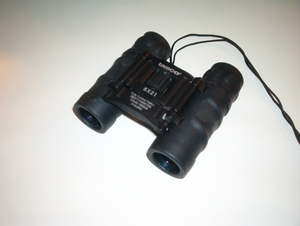A great night’s sleep can easily be suddenly ended by an earthquake. The peaceful dreams are shattered by the rumble of the earth. All chaos erupts. Earthquakes are some people’s worst nightmare. As a matter of fact, however, most earthquakes are very small and can’t be felt. That means, many nights that you were lying in bed, you may have slept through an earthquake. An earthquake is a sudden release of energy in the earth’s crust that creates seismic waves. Earthquakes are also known as tremors. Earthquakes cause the surface of the earth to shake and in many cases, displace the ground. An earthquake is generally natural phenomenon, but can also be a result of human activity. Most of the time, an earthquake is caused by the shifting of geological faults, however they can be caused by volcanic activity, landslides, mine blasts, and nuclear experiments. If a large earthquake epicenter is located offshore, the earthquake can trigger a tsunami.
How Earthquake Intensity is Measured
Small Earthquakes are constantly occurring around the world, especially in places like California and Alaska in the United States. However, earthquakes can occur almost anywhere. Earthquakes create seismic waves. Earthquakes are recorded with a seismometer, or a seismograph. The moment magnitude of an earthquake is conventionally recorded. An earthquake with a magnitude of 3 or lower, it is considered to be mostly imperceptible. An earthquake with a magnitude of 7 or more is likely to cause serious damage over large areas . Intensity of shaking is measured on the modified Mercalli scale, formerly the Richter scale. Places where seismic activity is measured are called seismic stations. Today, there are thousands of seismic stations. 90% of the world’s earthquakes occur in a horse-shoe shaped zone known as the Pacific Ring of Fire.
Effects of Earthquakes
The most common effect of earthquakes is the shaking and displacement of the ground. When the ground displaces, there are usually huge structural damages. Structural damage can lead to fires. The breaking of electrical power lines or gas lines can spread fire quickly. When water mains break, putting out the fire becomes increasingly difficult.
Probably the most deadly effect of earthquakes are tsunamis. Tsunamis are gigantic, long waves caused by earthquakes. Tsunamis can travel thousands of miles across the ocean and annihilate the shore line. Most tsunamis occur in earthquakes measured at 7.5 on the Richter scale or higher. Floods can occur as a second impact of earthquakes in situations where dams break. Earthquakes can also cause what is known as soil liquefaction. Soil liquefaction occurs when granular material temporarily loses its strength. When the granular material, such as sand, loses its strength, buildings that are on top of these areas may sink and collapse.
What to do During an Earthquake
The first thing to do in the midst of an earthquake is to stay calm and stay where you are at. If you are indoors, take cover under something sturdy such as a table or a desk. Be aware that the table or desk may slide. If you cannot get under something, brace yourself under a doorway or an inside wall. Stay away from windows, brick masonry, or anything that can fall on you.
If you are outdoors, remain outdoors. Stay away from buildings, street lights, trees, and utility wires. If you happen to be in a car, stay away from overpasses, and drive slowly to an area with no traffic. Avoid stopping at places where things are likely to fall on the car. Stay in the vehicle. Listen for updates on the radio and watch for road and bridge damage.
Conclusion
Many lives are lost yearly due to Earthquakes. Earthquakes often lead to volcanoes which cause further damages. Cleaning up and repairing places that have been hit by earthquakes can become very expensive. Many things, such as the destabilization of roads and highways, are not known to be a problem until at a later time. Earthquakes often lead to losses of many crops. Earthquakes, and other natural disasters such as typhoons, hurricanes, fires, and floods are dangerous and should not be taken lightly.


